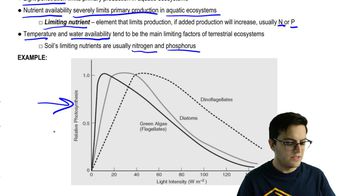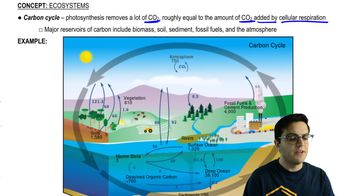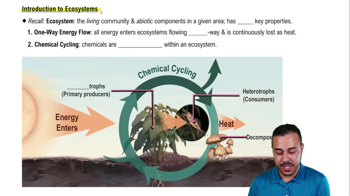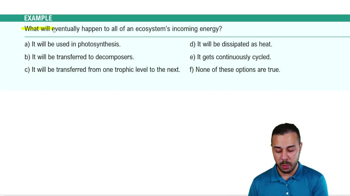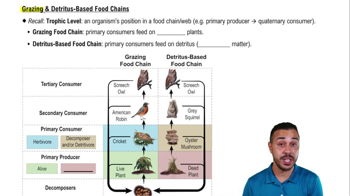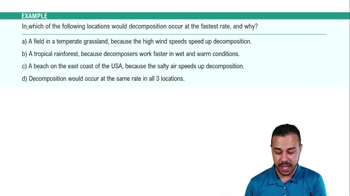One of the issues that can result from the fact that the transfer of energy and biomass up the pyramid is so inefficient, is that molecules that accumulate in biomass will actually concentrate at higher levels of the food web. These are going to be substances that are not easily digested or excreted and will efficiently accumulate in trophic levels. Often, these are toxins, such as heavy metals, substances that cannot be broken down or digested by living systems. Now, because organisms have to consume almost 10 times as much food as tissue they produce due to that inefficiency, these molecules are going to concentrate at higher levels, and that is why we call this biomagnification. You can see here at the base level of the producers, there are only a couple of these molecules. But then, these primary consumers are going to eat so much of those primary producers to generate their new biomass, that they are going to accumulate more of those molecules than the previous trophic level had. And so, it gets concentrated more and more as we move up in trophic levels.
Fortunately, primary decomposers, like bacteria, archaea, fungi, and roundworms are going to decompose organic matter and return all this stuff to the ecosystem. Soil organic matter is the component of soil that includes the decomposers and the detritus that they are decomposing at its various stages of decomposition. When it is completely decayed, we call it humus. This is formed from that completely decayed detritus and is super rich in nutrients. It is very good stuff for soil. Now, decomposition cycles nutrients through the soil and generates forms of these nutrients that plants can uptake so that they can return them to the ecosystems.
So, let's actually go ahead, flip the page, and look at some of these cycles.





